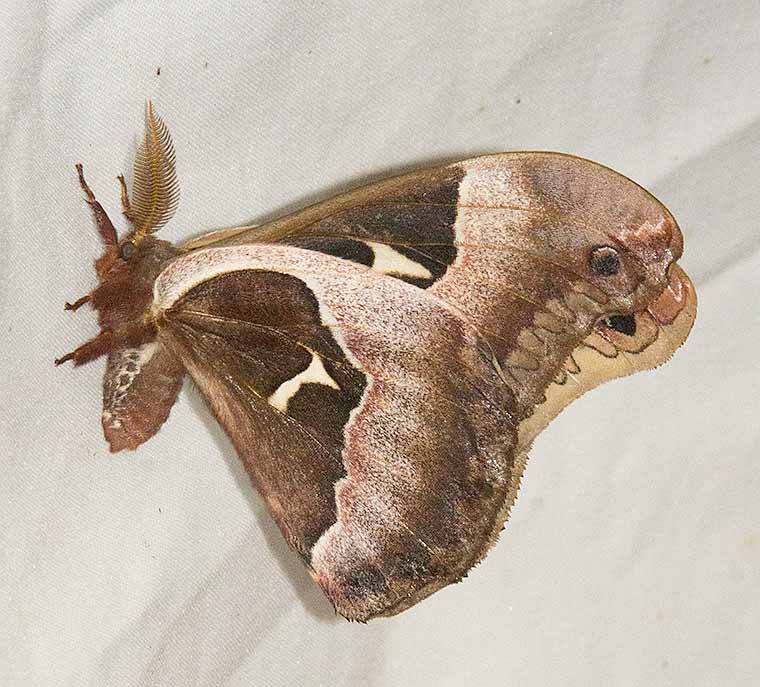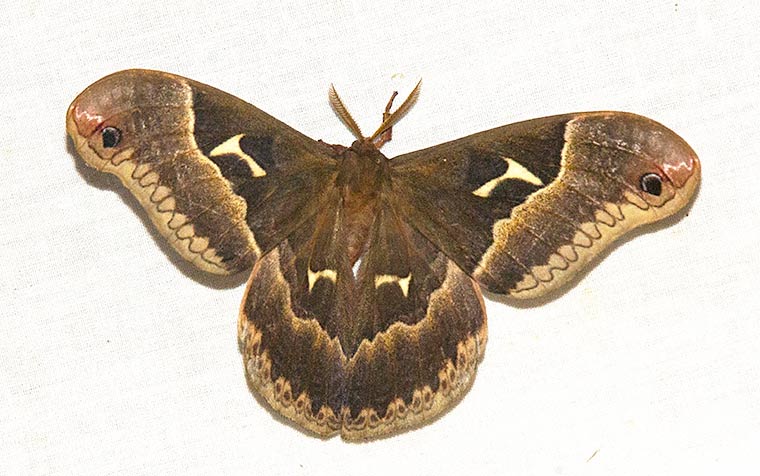It is always a treat when one of the Giant Silkworm Moths (family Saturniidae) makes an appearance. This Tuliptree Silkmoth (Callosamia angulifera) came to the moth sheet on our back deck earlier this year. I am finally getting around to posting it. It is almost four inches from wing tip to wing tip.
As the name suggests, Tuliptrees (Liriodendron tulipifera) are the favorite food of the larvae of this species. In fact, the larvae normally feed only on Tuliptree leaves. Tuliptrees are also called Yellow Poplar. However, they are in the magnolia family and are not closely related to either tulips or poplars. The flowers of Tuliptrees do superficially resemble tulips. See my post of May 11, 2014 for more information about Tuliptrees.
Adults, such as the one pictured here, do not have functional mouth parts and do not feed at all. Their sole purpose is to find a mate and produce eggs to be laid on Tuliptree leaves. The adult shown here is a male, and its large feathery-looking antennae show well in the upper photograph. The antennae enable the male to detect an airborne attractant (pheromone) secreted by the female. They are amazingly sensitive; only a few molecules of pheromone are sufficient to alert the male that a female is in the neighborhood. Females can be detected from several miles away. When the male detects the female it flies “up” the scent trail (toward higher concentrations of pheromone) until it finds the female.



Wow! What a life cycle! No mouth.
I enjoy your blog so very much. I sure wish you would consider doing this as a facebook post so we could share it with friends and family.
Thanks,
Bob Brown
I am thinking about how to best interface with Facebook.